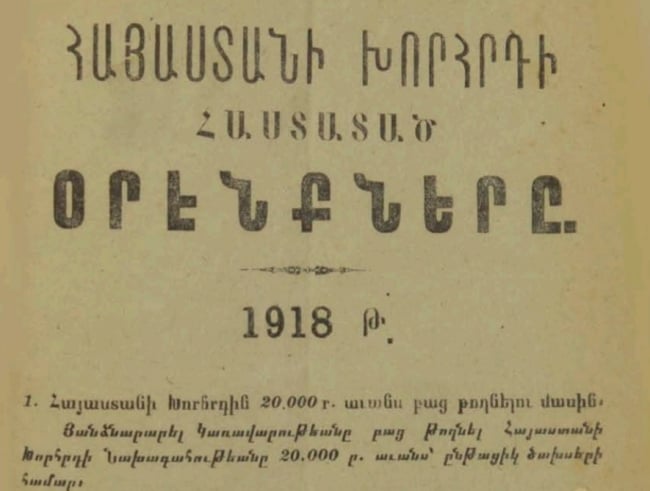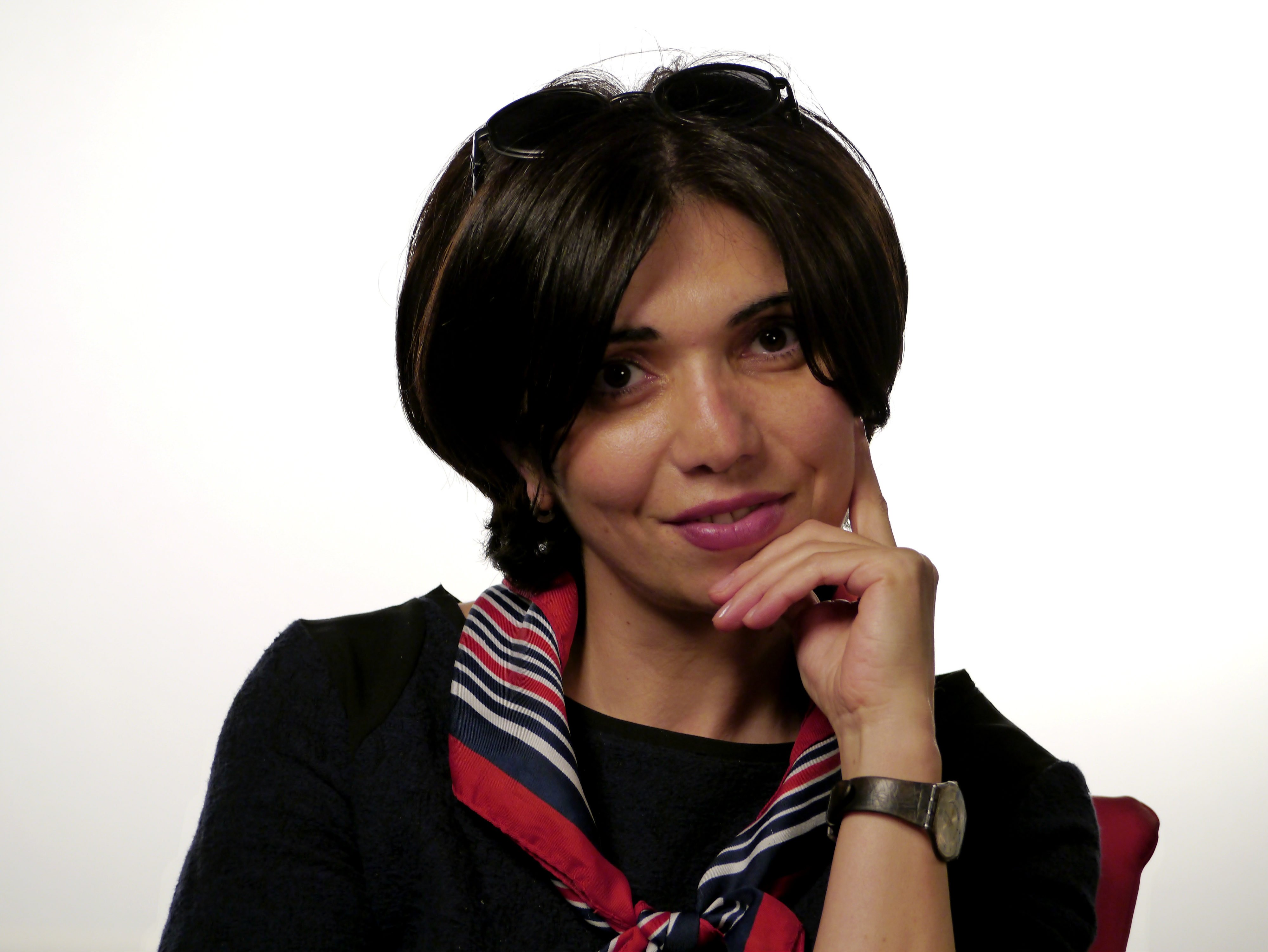
We have touched upon the press from the First Republic. This time we have highlighted how one of the most important events during the first 2.5 years of the First Republic’s existence, the only parliamentary election in 1919, was covered.
Up till then, the function of the legislator was exercised by the Council. That was formed in the summer of 1918, two months after the declaration of independence. At the same time, it was formed not as a result of elections, but rather as a result of political arrangements.
In this parliament, democracy was the very essence of the word. There were free chairs in the session hall intended for interested citizens.
“Recently society has shown great interest in Parliament sessions. Although the start of the session was announced at 7 o’clock, places reserved for the public were already full by 6:30” (Governmental Report, 1918, September 6, N2).
Today, as 100 years ago, the model of governance in Armenia was parliamentarian.
On March 12, 1919, the government adopted the election law of the All-Russian Constitutional Council as the basis for the parliamentary elections. Based on this, the Law of the Armenian Parliament was elaborated.
Accordingly, every citizen over the age of 20, regardless of gender or religion, had the right to participate in the elections that would be held in a general, secret, equal, direct and comparative way.
The number of members of parliament was eighty. Election days were June 21, 22, and 23.
The elections were according to the principle of proportion. The ballots consisted of 7 lists.
ARF Dashnaktsutyun, 120 candidates
The Armenian People’s Party, 65 candidates
Socialist Revolutionary Party, 35 candidates
Kurdish ist, 2 candidates
Assyrian list, 3 candidates
Non-Party Farmers Union,
Turkic list.
How was the First Republic’s Parliament, and how were the parliamentary elections held?
In the First Republic, the press had the same division as today, ruling and oppositional.
In this case, the Dashnak press was writing about the brilliant victory of the ARF in the parliamentary elections. The oppositional press testified that the elections were held with the use of administratie levers by electoral bribes.
The Armenian National Congress immediately decided not to participate in the elections. Why?
“Many things can be said about this bourjois political party, but what can you say when the party itself, seeing that the people have no authority or position, have refused to participate in the elections (Armenian Worker, ARF Dashnaktsutyun, 1919, June, 15).
Through the oppositional press, we already have the opportunity to understand the events of the 100th century without mythology,
In the article The Situation in Armenia, the Social Democratic Party tries to justify why it is not necessary to vote in favor of the ARF Dashnaktsutyun, proposing to vote for the N3 list.
“We have highlighted the chaos in Armenia’s domestic life, which is the result of the creative bankruptcy of the Armenian regions. During its thirty years of existence, the Armenian ruling party has made the Armenian people the victim of foreign intrigues. The ARF has consistently adapted its movements to external forces,… and the martyrdom of the Armenian people in recent years and currently, is a direct consequence of that foolish policy” (Social Democrat Labor Weekly, 1919, June, 15).
The People’s Party of Armenia (PPA), which had refused to participate in the elections, responded, “ It seems that the Dashnaks have set a goal to show the world their mockery and disdain for all the rules ensuring freedom of expression. Seeing this insolent fraud, man harbors feelings of hatred towards this fraudulent elections” (Humanism, 1919, p10)
According to the newspaper, at the elections, the ruling ARF Dashnaktsutyun party promised the hungry bread.
In the article The ARF Dashnaktsutyun and their Opponents, the ARF counters, “Obvious and unknown opponents of the ARF are in action. They are trying to discredit not only the Dashnaktsutyun but also the Government of Armenia… We know that they are quick to point out their strengths, but not capable of thinking prospectively” (Job, 1919, p. 38).
Elections were held within the defined period.
The ARF was voted for by 230,272 voters. This party held the absolute majority in the Parliament with 72 MPs.
13,239 voters (4 MPs) voted for the Socialist Revolutionaries, 8,187 voters (3 MPs) for the Turks, 4,224 voters (1 MP) in favor of the Union of Peacemakers. The Kurds, The People’s Party of Armenia and the Assyrians did not have enough votes to be represented in the parliament.
The work of the parliament was covered by the press in much detail, but in a rather distorted version in the Haraj newspaper.
The laws approved by the Armenian Council were published in a special newsletter. The expenditure report was extremely transparent.
The financial allocations section was also a favorite point for NA deputies, “A delegation was sent to open a seven hundred thousand roubles loan for agreeing states” (The Laws of Armenia Approved By The Armenian Council, 1918-1919, part 1).
Lilit Avagyan
The views expressed in the column are those of the author's and do not necessarily reflect the views of Media.am.


Add new comment
Comments by Media.am readers become public after moderation. We urge our readers not to leave anonymous comments. It’s always nice to know with whom one is speaking.
We do not publish comments that contain profanities, non-normative lexicon, personal attacks or threats. We do not publish comments that spread hate.